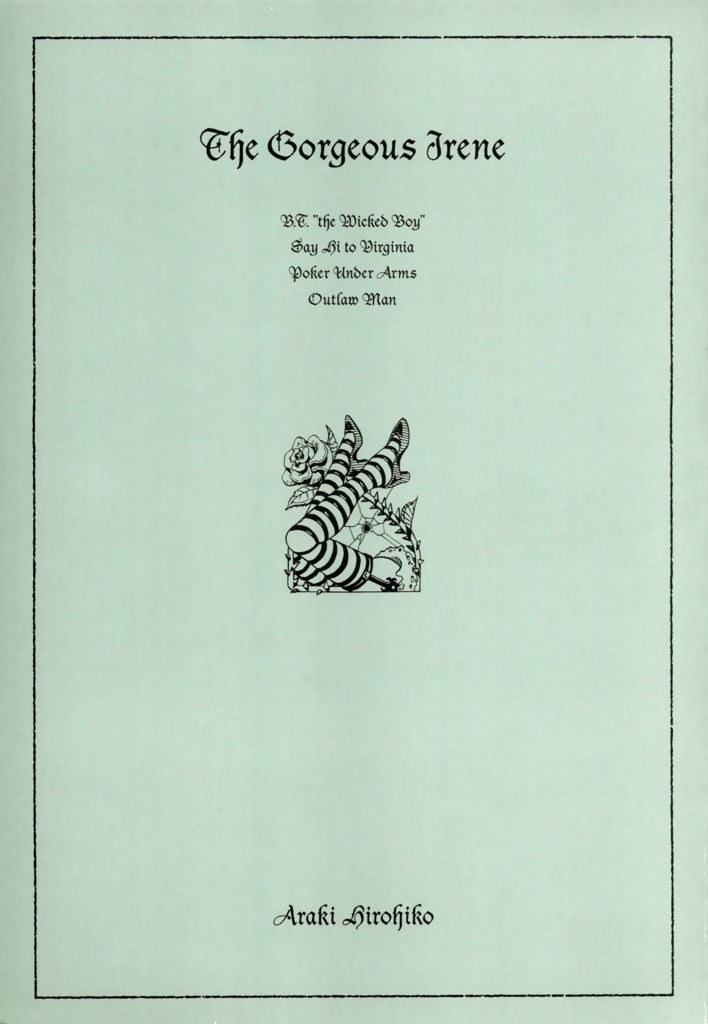
Maxine Clair’s passing at 86, on September 5 in Washington, marks the quiet closing of a profoundly inspiring chapter in American literature. Her life story, particularly her transformative journey into writing in middle age, stands as a compelling testament to the power of persistence and the pursuit of long-deferred dreams. For many, the idea of leaving a stable career behind to embrace the unpredictable world of the arts remains a distant fantasy, but Ms. Clair courageously turned it into her remarkable reality, offering a beacon of hope for anyone seeking to redefine their purpose later in life.
Before she became the lauded poet and novelist familiar to readers, Ms. Clair navigated a different professional landscape, one deeply rooted in the practicalities of medical technology and hospital administration. It was from this solid, albeit ultimately unfulfilling, perch that she launched her ascent into the literary world, a bold and deeply personal pivot that few dare to make. Her eventual success, marked by universal praise for her works like “Rattlebone,” underscores a prodigious talent that patiently awaited its moment, finally blossoming into a distinctive voice that captured the complexities of human experience with grace, precision, and an unwavering commitment to authenticity.
Her story is not merely one of individual achievement; it is also a profound reflection on the power of introspection, the courage required to forge an unconventional path, and the enduring human desire for creative expression. Ms. Clair’s ability to articulate the “everyday wonders of the American Midwest” and the deeply personal journey of coming of age within a segregated community speaks volumes about her exceptional observational prowess and profound empathy. As we reflect on her rich legacy, we are reminded of a life that mirrored the very themes she so eloquently explored in her writing: transformation, resilience, and the relentless, often challenging, pursuit of one’s truest self.

1. **The Late Bloom of a Literary Career**Maxine Clair’s entry into the distinguished echelons of the literary world was anything but conventional, gracefully challenging the deeply ingrained notion that true creative genius must manifest exclusively early in life. She published her inaugural book of poems, titled “Coping With Gravity,” at the significant age of 49, a stage in life when many individuals are typically contemplating retirement, solidifying their existing professional identities, or simply settling deeper into the established routines of their chosen careers. This initial, yet potent, foray into the realm of published work was, in essence, merely a thoughtful prelude to an even more substantial and critically acclaimed achievement that would follow.
Her truly pivotal work, the universally lauded novel “Rattlebone,” saw the illuminating light of day when Ms. Clair had reached the age of 55. Such an unconventional and inspiring trajectory powerfully highlights a profound dedication to her craft, an unwavering belief in her own innate potential, and the remarkable patience required to nurture a burgeoning talent over many years. Her success stands as a compelling demonstration that genuine passion and refined talent can indeed blossom beautifully, often unexpectedly, and with profound impact, at any given stage of an individual’s life journey, defying typical societal timelines for artistic breakthroughs.
This distinctive path serves as a powerful and much-needed counter-narrative to the frequently romanticized, and sometimes unrealistic, image of the young, often struggling, artist who achieves immediate recognition. Instead, Ms. Clair’s deeply personal story is that of a mature individual, exceptionally rich with diverse life experiences, who made a conscious and courageous choice to finally give articulate voice to the myriad stories, observations, and profound reflections that had undoubtedly simmered within her for several decades. This impactful, late-stage emergence imbued her writing with an unparalleled depth, a nuanced perspective, and a quiet wisdom that would have been largely unattainable earlier in her life, allowing her to approach complex human themes with an understanding uniquely derived from a life fully and thoughtfully lived.
The deliberate decision to embark upon a full-fledged professional writing career in her middle age required not only immense personal courage but also a remarkable willingness to step resolutely outside the well-defined comfort zone of a long-established and secure profession. It represented a fundamental and deeply personal reorientation of her life’s core purpose, a significant shift from a role primarily characterized by administrative responsibility and medical precision to one wholly dedicated to the expansive possibilities of creative expression. This truly remarkable transition not only speaks volumes about her inherent personal tenacity and formidable intellectual resolve but also offers an exceptionally compelling example of how profound and genuine fulfillment can ultimately be found by fearlessly embracing new and challenging endeavors, while honorably listening to and nurturing one’s innermost callings, irrespective of conventional timelines or prevailing societal expectations.
Read more about: A Powerful Silence: Honoring the Enduring Cinematic Visions of Iconic Directors Whose Journeys Ended Too Soon

2. **From Medical Technology to Creative Pursuit**Before the broader literary world came to recognize her profound talents, Maxine Clair operated with distinction within the precise, systematic, and often demanding realm of medical technology. Her professional journey commenced upon her arrival in Washington in 1967, armed with a degree specifically in medical technology. From this foundational point, she steadily and competently advanced her career, eventually ascending to the significant position of chief medical technologist at what is now known as Children’s National Hospital by the year 1980. This role was, by all conventional accounts, a “solid middle-class job,” providing not only considerable financial stability but also a clearly defined professional trajectory within the healthcare sector, a path many would consider enviable and secure.
Yet, beneath the outwardly competent surface of professional accomplishment and the reassuring security of her financial standing, there persisted a subtle, yet increasingly pervasive, sense of unfulfillment. A quiet, persistent yearning for something more intrinsically creative and intellectually stimulating began to take root and grow. This internal unease, though not immediately disruptive, slowly but surely highlighted the limitations of her current profession in truly satisfying her deeper, more artistic sensibilities. It was a clear indication that her spirit sought a different kind of engagement, prompting a crucial period of introspection and comprehensive self-assessment that would ultimately redefine her life’s direction.
Her extensive professional background in medical technology, though seemingly disparate and far removed from the intuitive and imaginative world of the arts, likely contributed significantly to the disciplined, meticulous, and detail-oriented approach that became so evident in her mature writing. Her daily work within a bustling hospital environment would have exposed her directly to the intricate realities of human fragility, resilience, suffering, and hope, providing a rich, often poignant, and undeniably profound wellspring of observation, empathy, and narrative potential. This deep exposure to the human condition, viewed through a scientific lens, inadvertently prepared her for the empathetic and realistic portrayals that would characterize her literary output.
The striking juxtaposition of her two distinct careers — the methodical, evidence-based world of medical technology and the imaginative, emotionally resonant realm of literature — profoundly underscores a remarkable personal and intellectual evolution. It powerfully illustrates how an individual can meticulously accumulate invaluable life experiences and a wealth of wisdom in one specific field, only to later brilliantly channel that accumulated knowledge, honed perspective, and mature understanding into an entirely different, and ultimately more personally resonant, endeavor. Her eventual courageous departure from a secure administrative position for the inherently uncertain, yet creatively boundless, path of a writer speaks volumes about the intense depth of her desire for genuine creative expression and the compelling, almost irresistible, need to articulate the rich narratives and profound insights that had long resided within her heart and mind.
Read more about: The Unseen Depths of Obsession: Unpacking the Real-Life Scandals Behind the True Crime Documentaries Captivating Audiences

3. **The Caribbean Catalyst: A Life-Altering Decision**The truly pivotal moment that irrevocably ignited Maxine Clair’s extraordinary transformation from a proficient hospital administrator into a burgeoning, passionate writer occurred during a serendipitous and extended vacation in the enchanting Caribbean in 1980. This was far from being a typical, leisurely holiday; it was, in fact, a deliberate and deeply introspective retreat, thoughtfully funded by her income tax refund, and explicitly aimed at confronting a profound internal “malaise” and earnestly searching for an entirely new, more fulfilling direction in her life. It represented a period of intense, focused self-reflection, a conscious and determined effort to envision and sculpt a different, more artistically aligned future for herself, one that would be distinctly removed from the familiar and often confining routines of her established professional life.
During this uniquely transformative trip, Ms. Clair deeply immersed herself in “some way-out books that I won’t even mention,” as she candidly recounted to The Chicago Tribune in a revealing 1994 interview. These unconventional readings, thoughtfully chosen for their expansive perspectives, combined synergistically with the reflective solitude and inspiring natural beauty of her Caribbean surroundings, serving as powerful catalysts for internal change. This unique combination allowed her to “program myself to understand I could do something else, and I could have a different life.” This powerful, almost meditative process of profound self-recalibration led to an undeniable and liberating clarity: upon her return from this pivotal journey, it became “very clear: I was going to be a writer.” This compelling anecdote perfectly encapsulates the profound and often radical impact that intentional self-discovery and courageous introspection can have, leading directly to fundamental and deeply fulfilling life changes.
This Caribbean sojourn was, therefore, much more than a mere break from her routine work; it was, in its purest essence, a deliberate and brave act of self-reinvention and personal empowerment. It vividly demonstrates Ms. Clair’s proactive and determined approach to her own happiness, fulfillment, and ultimate purpose, rather than passively accepting the limitations of her current circumstances or simply yielding to societal expectations. The insightful decision to invest her hard-earned income tax refund in this introspective, soul-searching journey, rather than opting for more tangible material possessions, speaks volumes about her deep-seated desire for profound personal growth and genuine artistic expression. This singular, life-altering event, born from a period of intense personal yearning and courageous self-inquiry, firmly established the foundational bedrock for her extraordinary second act as an acclaimed and influential literary figure.
Furthermore, this decision highlights a philosophical shift in her priorities, moving from the accumulation of material comforts to the cultivation of intellectual and spiritual wealth. By consciously seeking a different kind of enrichment, Ms. Clair paved the way for a life that would eventually provide both personal satisfaction and significant contributions to the cultural landscape. It was a silent declaration of independence, a commitment to exploring the depths of her own potential, and a testament to the idea that true value often lies beyond the visible.

4. **Balancing Ambition and Responsibility: The Path to an MFA**Having made the resolute and life-altering decision to embrace her new identity as a writer, Maxine Clair didn’t merely dabble in her newfound ambition; she pursued it with an unwavering commitment to formal education and rigorous intellectual development. Her journey into the academic sphere, a crucial step in honing her nascent craft, began quite humbly, by submitting a collection of her early poems to a local writing workshop. The remarkable potential and distinct literary voice observed by her perceptive teacher in these initial works were significant enough to prompt a direct and highly encouraging recommendation: that she should formally apply to the highly respected master’s program in creative writing at American University. This pivotal step marked a crucial and deliberate shift from self-taught aspiration and solitary creative exploration to a more structured, academically rigorous, and formally guided literary development, meticulously laying the intellectual groundwork for her future and considerable literary successes.
However, Ms. Clair’s ambitious pursuit of an MFA was far from being a straightforward or unencumbered path, presenting her with a unique set of considerable personal and logistical challenges. At that critical juncture in her life, she was actively raising four children entirely on her own, a formidable responsibility that typically demands full-time devotion, immense energy, and often precludes the possibility of undertaking extensive academic endeavors. Furthermore, the financial implications of leaving her hospital job entirely, which provided crucial support for her family, were simply unfeasible given her circumstances. Demonstrating truly remarkable tenacity, formidable resourcefulness, and an unshakeable determination, American University, recognizing her exceptional talent and unique situation, admirably facilitated her ambition by arranging a crucial teaching assistantship. This valuable opportunity allowed her to significantly offset some of the considerable academic costs, while simultaneously enabling her to maintain her essential hospital position on a part-time basis. This intricate and demanding balancing act unequivocally underscores her unwavering commitment to both her cherished family responsibilities and her burgeoning, deeply personal creative dreams.
Her ultimate and successful completion of the demanding MFA program in 1984, achieved while navigating such complex personal and professional demands, stands as a profound testament to her extraordinary discipline, inherent resilience, and an unwavering focus on her long-term literary goals. It powerfully illustrates that rigorous formal training and structured academic environments can indeed play a critically crucial role in not only refining but also substantially enhancing natural, raw talent, even when life relentlessly presents numerous, often overwhelming, obstacles. This intense period of dedicated academic study and the arduous navigation of dual responsibilities proved instrumental in transforming her declared intention to write into a concrete, highly skilled, and professional craft, meticulously preparing her for the significant and enduring literary contributions that would follow. It was a demanding journey defined by both profound intellectual rigor and immense personal sacrifice, yet it ultimately yielded invaluable, career-defining dividends that shaped her literary destiny.
This period of academic rigor and personal sacrifice was not merely about acquiring skills; it was about solidifying her identity as a serious writer, validating her creative aspirations in a formal setting. The discipline ingrained during her MFA studies, coupled with the practical experience of balancing family and work, forged a formidable character equipped to face the inherent difficulties of a literary career. It was a crucible in which her artistic resolve was tested and strengthened, ensuring that when her work finally reached the public, it did so with a level of polish and intellectual depth that commanded respect.

5. **”Coping With Gravity”: Her Poetic Introduction**Maxine Clair’s formal literary journey officially commenced with the highly anticipated publication of her first book, a compelling collection of poems aptly titled “Coping With Gravity.” This significant volume was released in 1988 by the Washington Writer’s Publishing House, marking a pivotal moment in her burgeoning career. This debut, arriving when she was 49 years old, elegantly introduced readers to her distinctive and mature poetic voice, immediately showcasing her profound connection to the subtle beauty of landscapes and the intricate rhythms of everyday life. It represented a monumental milestone, solidifying her identity not merely as an aspiring wordsmith, but unequivocally as a published poet, and graciously offered an early, tantalizing glimpse into the sophisticated stylistic nuances that would later come to define her acclaimed prose.
The meticulously crafted poems contained within “Coping With Gravity” are singularly characterized by their deep and resonant appreciation for what Ms. Clair termed “the everyday wonders of the American Midwest.” This deeply personal and geographically rooted thematic focus eloquently revealed her intimate connection to her origins and her exceptionally keen observational skills, enabling her to discern and articulate profound beauty and inherent significance in seemingly ordinary scenes, fleeting moments, and shared human experiences. The evocative passage thoughtfully quoted from her poem “Rosedale, Kansas” vividly illustrates this remarkable ability: “Mirages hovered above undulant highways and summer stomped his dusty feet, conjured up sunflowers that ran wildly through fields of cornsilk.” This rich and vibrant imagery unmistakably showcases her exceptional talent to imbue natural phenomena with a palpable sense of personification and a vibrant, almost painterly, quality, masterfully transforming simple, quotidian observations into exquisitely lyrical and deeply resonant poetic expressions.
Beyond its immediate aesthetic appeal, this initial collection, while perhaps less widely recognized than her subsequent, highly celebrated novel, was nonetheless a critically crucial foundational step in her artistic development. It provided an invaluable platform for Ms. Clair to meticulously refine her poetic craft, courageously experiment with language, structure, and form, and consciously develop the profound narrative sensibility that would later underpin and elevate her fiction. The scrupulous attention to detail, the exceptionally evocative language, and the inherent ability to precisely capture a specific time, mood, and place within these compelling poems meticulously laid the intellectual and creative groundwork for the more expansive, intricate, and deeply immersive storytelling she would masterfully undertake in “Rattlebone.” This demonstrated, with undeniable clarity, a consistent artistic vision and an evolving mastery of her chosen medium from her very earliest published works.
“Coping With Gravity” was more than just a collection of verses; it was an act of literary self-definition, a declaration of her chosen art form. It gave her the confidence and the technical skills to transition to prose, understanding how to build worlds and convey emotion through carefully chosen words. The themes explored in her poetry—memory, place, and the internal lives of ordinary people—would find a grander canvas in her fiction, showcasing a continuous artistic thread woven throughout her entire body of work.

6. **The Genesis of “Rattlebone”: Crafting a Narrative Voice**The intricate and often challenging path to the ultimate publication of “Rattlebone” was, in every sense, the profound culmination of years of persistent, dedicated effort, a journey eloquently marked by both “frustration and transformation,” as the original context precisely describes. This eventually acclaimed novel, meticulously structured as a compelling collection of intricately linked stories, would unequivocally become her most celebrated and enduring work of prose. It was proudly published by the prestigious and discerning firm Farrar, Straus & Giroux in 1994, a significant year when Ms. Clair had reached the experienced age of 55. The extensive journey to its complete and polished form was far from swift, instead reflecting a meticulously careful creative process and a deep, unwavering commitment to painstakingly perfecting her unique narrative voice and intricate storytelling craft. It represented the full, majestic flowering of the profound literary aspirations initially born from her transformative Caribbean revelation, now brought to magnificent fruition.
The fundamental and “driving idea” behind the creation of “Rattlebone” was both deeply personal in its emotional resonance and profoundly significant in its social commentary, as Maxine Clair herself articulately expressed: “to tell the story of a Black girl coming of age — somewhat naïve in ways and wise in others — who was just a real person trying to become an adult.” This insightful core vision speaks volumes to her ardent desire to sensitively explore universal themes of personal growth, self-discovery, and the intricate process of maturation through a specific, authentic cultural lens. It offered an honest, nuanced, and utterly authentic portrayal of a young Black girl’s complex experiences growing up in the vivid and historically charged setting of 1950s Kansas City, Kansas, Ms. Clair’s own hometown. Her unwavering commitment to presenting a truly “real person” powerfully suggests a dedication to profound psychological depth and an explicit rejection of any one-dimensional or stereotypical portrayals, ensuring that her characters resonated with a genuine, undeniable humanity.
The inspired structural choice of presenting “Rattlebone” as a collection of intricately linked stories allowed Ms. Clair to meticulously build an immersive and deeply believable world around her central character, Irene, and the vividly imagined, fictionalized African American neighborhood of Rattlebone itself. This ingenious narrative structure uniquely enabled her to explore various, interconnected facets of the community’s vibrant life and Irene’s multifaceted development from multiple, illuminating angles, thereby creating a rich, expansive, and deeply textured tapestry of shared human experiences. The extensive period of meticulous development and careful refinement dedicated to “Rattlebone” ultimately yielded extraordinary artistic dividends, resulting in a work that was universally lauded for its characteristic “steady, unshowy narrative style” and its truly remarkable ability to “evoke an entire world around a single young character.” It stood as an eloquent testament to her patient craftsmanship, unwavering artistic integrity, and a clear, compelling artistic purpose that guided every word.
Furthermore, the novel’s success lies in its ability to transcend individual experiences and speak to broader societal truths, without ever sacrificing the intimate details that make each story compelling. Ms. Clair meticulously crafted a universe where the challenges of segregation and prejudice were ever-present, yet the resilience, joy, and complex inner lives of her characters took center stage. This balance allowed the book to resonate widely, cementing her reputation as a writer who could capture the profound human spirit within specific historical and cultural contexts, making “Rattlebone” a vital contribution to American literature.

7. **The Resounding Acclaim for “Rattlebone”**Upon its publication in 1994, Maxine Clair’s novel, “Rattlebone,” received widespread critical approval, solidifying her position as a significant literary voice. Released by the esteemed firm Farrar, Straus & Giroux, the book garnered “universal praise” for its merit. This reception was particularly notable given Ms. Clair’s unconventional path to authorship, highlighting the power of a finely honed craft, irrespective of a writer’s age.
Critics lauded Ms. Clair’s distinctive storytelling, frequently commending her “steady, unshowy narrative style.” This understated yet powerful prose allowed the intricate layers of her fictional world to unfold with compelling clarity and emotional depth. Reviewers consistently pointed to her remarkable “ability to evoke an entire world around a single young character,” drawing readers intimately into the lived experiences of her protagonist, Irene, and her community.
Charles Larson, writing in The Chicago Tribune, declared, “There is much to admire in Maxine Clair’s ‘Rattlebone.’” He further emphasized, “Above all, one celebrates the quiet assurance of her talent.” Such affirmations underscored the novel’s success as a testament to Ms. Clair’s inherent skill and meticulous dedication, a talent matured over a lifetime of observation. The book’s immediate embrace by critics confirmed the profound impact of her unique vision and voice.

8. **Kansas City, 1950s: A World Evoked with Precision**The setting of “Rattlebone” is meticulously crafted, placing its narrative firmly in the 1950s Kansas City, Kansas, Ms. Clair’s hometown. This specific geographical and temporal anchoring provided the novel with an authentic backdrop, allowing Ms. Clair to explore the complexities of an era and place with an insider’s understanding. This choice was foundational to the story’s fabric, imbuing it with a palpable sense of history and community.
Within this historical landscape, Ms. Clair created the fictionalized African American neighborhood of Rattlebone. This community serves as more than just a stage; it becomes a character itself, vibrant with life, struggle, and resilience. The novel’s focus allows for a detailed exploration of “life in segregated communities,” offering readers a window into the daily realities and emotional landscapes of its inhabitants during a pivotal period in American history.
Crucially, Ms. Clair’s portrayal transcends mere documentation of hardship. Her narrative prioritized “the humanity of their inhabitants as much as on the pity of the people’s circumstances.” This empathetic approach ensured characters were depicted not as victims, but as complex individuals navigating their lives with dignity and a full spectrum of emotions. The historical and social textures of 1950s Kansas City are interwoven with intimate personal stories, creating a narrative both historically specific and universally relatable.

9. **Irene: A Portrait of Authentic Growth**At the heart of “Rattlebone” is Irene, a central character whose journey of self-discovery forms the novel’s emotional core. Ms. Clair herself articulated the “driving idea” behind the novel: “to tell the story of a Black girl coming of age — somewhat naïve in ways and wise in others — who was just a real person trying to become an adult.” This statement underscores Ms. Clair’s dedication to presenting a protagonist who is multifaceted, relatable, and genuinely human in her development.
Irene’s character embodies the intricate process of maturation, a blend of youthful innocence and dawning understanding. Her “naïve in ways and wise in others” nature allows readers to witness her growth through various experiences, both challenging and enlightening. Ms. Clair meticulously crafts Irene’s internal world, inviting empathy and connection as the young girl grapples with identity, relationships, and her place within a specific community during a tumultuous era.
The portrayal of Irene as “just a real person” was a deliberate artistic choice, rejecting one-dimensional or stereotypical depictions often associated with characters from marginalized communities. Instead, Ms. Clair focused on psychological depth and authentic emotional responses, making Irene’s struggles and triumphs resonate with profound humanity. Through Irene, readers gain an intimate perspective on the “deeply personal journey of coming of age within a segregated community,” a testament to Ms. Clair’s “exceptional observational prowess and profound empathy.”

10. **A “Steady, Unshowy” Narrative Style**Maxine Clair’s distinct narrative style, often described as “steady” and “unshowy,” was a cornerstone of her literary success, particularly evident in “Rattlebone.” This characteristic prose eschewed overt ornamentation in favor of clarity, precision, and an immersive quality that drew readers subtly into her created world. Her writing possessed a quiet strength, allowing the inherent drama and emotional weight of her stories to emerge naturally.
The novel’s structural choice, presented as a collection of intricately linked stories, further exemplified this style. This ingenious format allowed Ms. Clair to explore various facets of Irene’s life and the Rattlebone community from multiple, interconnected perspectives. Each story, while standing alone, contributed to a larger, cohesive narrative tapestry, gradually building an expansive and deeply textured world around the central young character. This structural elegance underscored her mastery of form.
Her “ability to evoke an entire world around a single young character” was consistently praised by critics. This skill derived from her meticulous attention to detail, her keen observational eye, and her capacity to imbue everyday moments with profound significance. Ms. Clair’s prose was not only grammatically precise but also rich in evocative imagery, transforming mundane observations into memorable literary moments, much like her earlier poetry. This blend of precision and evocative power allowed her to articulate the “everyday wonders of the American Midwest” and the nuanced experiences of her characters.

11. **Literary Lineage: Significant Comparisons**The critical reception of “Rattlebone” frequently included comparisons to other seminal works in American literature, underscoring Maxine Clair’s place within a rich storytelling tradition. These comparisons were not merely complimentary; they situated her novel within a lineage of authors who explored similar themes and utilized analogous narrative structures, further illuminating her unique contribution. Such recognition positioned her work alongside established classics, validating its depth and artistic merit.
One prominent comparison was to Sherwood Anderson’s “Winesburg, Ohio” (1919), a collection of interconnected short stories portraying a small American town. This parallel highlighted Ms. Clair’s similar achievement in “Rattlebone,” where individual stories of Irene and Rattlebone collectively form a comprehensive, deeply human tapestry. The comparison spoke to the profound effect of building an entire world through a series of intimate, character-driven vignettes, revealing intricate psychological landscapes.
Furthermore, “Rattlebone” recalled works such as Gloria Naylor’s “The Women of Brewster Place” (1982). This comparison specifically emphasized Ms. Clair’s insightful exploration of “life in segregated communities,” echoing Naylor’s impactful portrayal of an urban Black neighborhood. Both authors focused “as much on the humanity of their inhabitants as on the pity of the people’s circumstances,” emphasizing resilience, internal lives, and complex social dynamics. These comparisons affirmed Ms. Clair’s capacity to address profound social issues through empathetic, character-focused narratives.
12. **An Enduring Legacy of Transformation and Resilience**Maxine Clair’s literary career, marked by its late blossoming and profound impact, has left an inspiring and enduring legacy in American literature. Her work, particularly “Rattlebone,” stands as a powerful testament to “transformation, resilience, and the relentless, often challenging, pursuit of one’s truest self,” themes deeply reflected in her own life. Her ability to articulate these universal experiences through the specific lens of a Black girl coming of age in a segregated community underscored her unique contribution and lasting relevance.
Ms. Clair’s exceptional “observational prowess and profound empathy” allowed her to craft narratives both historically precise and universally relatable. She possessed a rare gift for capturing “the everyday wonders of the American Midwest” and translating the intricacies of the human spirit into compelling prose. Her refusal to shy away from her characters’ complexities, focusing instead on their innate dignity and strength, solidified her reputation as an author of remarkable insight and integrity.
Beyond her acclaimed novels and poetry, Ms. Clair’s life story itself serves as a powerful inspiration. Her decision to embark on a full-fledged writing career in middle age, leaving a secure profession for a personal creative calling, offers a compelling model of courage and self-reinvention. This journey, as much as her published works, embodies the profound reflection on “the power of introspection, the courage required to forge an unconventional path, and the enduring human desire for creative expression.” Her legacy is thus not only literary but deeply human.
Read more about: What DNA Tells Us About Europe’s First Settlers: A Journey Through Ancient Migrations and Genetic Legacies
The impactful contributions of Maxine Clair, through both her meticulously crafted narratives and her inspiring personal trajectory, continue to enrich the American literary canon. Her unique voice, characterized by quiet assurance and profound empathy, explored the delicate balance between individual aspirations and broader societal forces. Her work reaffirms the timeless power of storytelling to illuminate the human condition, offering insights into resilience, transformation, and the enduring quest for self-realization.




